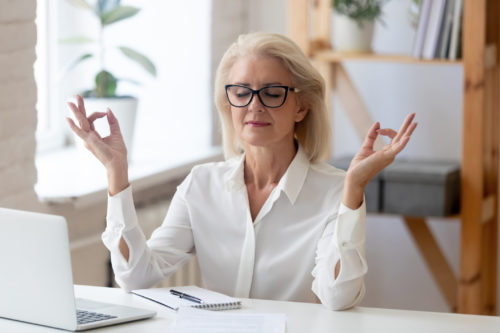You’re breathing right now — aren’t you?
By WHN editorial team
Of course you are! But take a moment to really notice how you’re breathing. Are you holding your breath a lot? Are your breaths shallow or rapid? Are you breathing through your nose, or your mouth?
Because deep breathing can help you relax and feel calmer, it can make you feel better when you’re stressed or anxious. When we checked in recently with one of our customers, she told us that when she had tried it, she ended up feeling out of breath and light-headed. She wanted help.

Here’s what our Wellness Coach told her:
A good way to get started is to sit up straight but not rigid, or lie down comfortably.Put one hand on your belly and just breathe normally for about a minute. Now, take a long, slow, deep breath in through your nose, feeling your stomach rise with the inhale — and then exhale through your nose, letting your belly fall as your lungs empty out. Aim to inhale for 3 seconds with a slight pause at the top of your breath and then exhale for 3 seconds. Continue this pattern for a couple of minutes. After a few sessions, gradually go for 5 minutes, 10 minutes, etc. Closing your eyes can help you focus more on keeping the pattern going.
Learning how to “surrender” to this breathing practice can take a little time. Notice if you feel resistant to letting go (very common at first) and try not to rush through these few moments you’ve set aside.
It’s very important to breathe mostly through your nose — that keeps you from hyperventilating and feeling dizzy. After you get the hang of it, try a few powerful exhales through your mouth about halfway through your session — still inhaling through your nose.These “cleansing breaths” release tension, stress, fatigue — and anxiety.
Be patient and kind to yourself. Simply start over if you get distracted and start breathing too quickly. Deep breathing, like most worthwhile activities, takes a little practice.
* Information presented here is not intended to cure, diagnose, prevent or treat any health concerns or condition, nor is it to serve as a substitute professional medical care.










